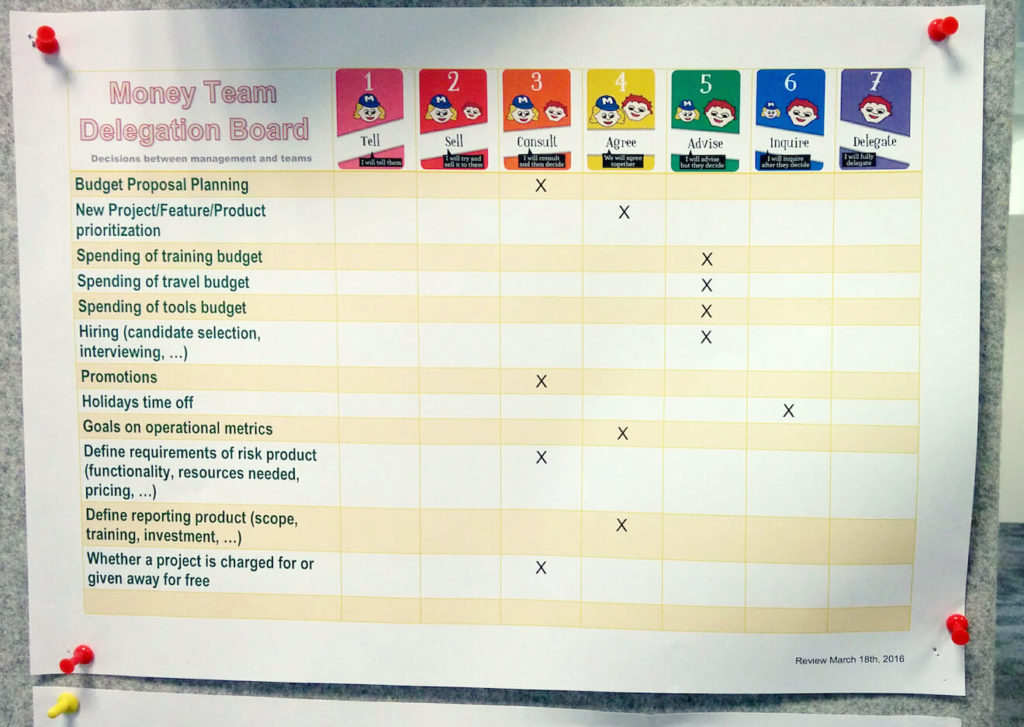by Fabio Frascella
Self organization is a highly recurrent topic when speaking about motivated and happy teams, and I’m a big fan of it. To some of us, it’s because of the sense of purpose, to others the cause of employee engagement and happiness. Whatever your reason is you will find something useful for you and your team by experimenting with self organization.
Being part of the Kaizen team at the Magento Barcelona office we’ve had the fortune to work on self organization with several teams, run many experiments with them and see them mature over the last three years through trial and error.
Self organization comes in many different forms and flavors and, like every complex problem, it has infinite solutions. Moreover, depending on your point of observation, it can have one meaning or another.
DELEGATION AND TRUST
If you manage teams and wonder how to embrace self-organization, it usually starts with treating people like adults, trusting that they will do the right thing and holding them accountable for their decisions, whatever that means for your work and industry. And because you know things can go awry from time to time, you also need teams to have their own mechanism to recognize when trust is being abused or overall expectations are not being met. That mechanism in most cases is just the ability to give feedback to one another, including to and from you.
Giving up the managing part to focus on the business or whatever comes next can sometimes stop you from telling the team what you think because you want to avoid being bossy. If you recognize yourself in that situation, remember that it is still OK to feel upset when your expectations are not met and it’s OK to tell the team how you feel. You aren’t being bossy by doing that, you’re just being yourself.
Letting go of command and control habits can be hard, but it can also have great advantages, among them:
- More time for learning or improving other skills, focusing on the business or becoming more of a mentor or guide for your team
- The relief and boost in mental and physical energy that comes from stopping being a control freak
- The joy that comes from seeing people around growing and being more engaged

Self organization doesn’t happen overnight and fortunately there are ways to get there in a controlled manner. A Delegation Board is a very powerful tool for you to start with.
Learn more about Delegation and Empowerment:

